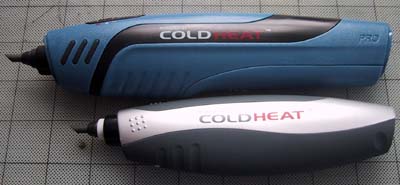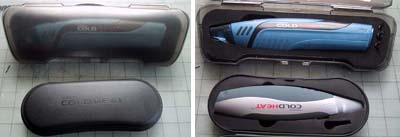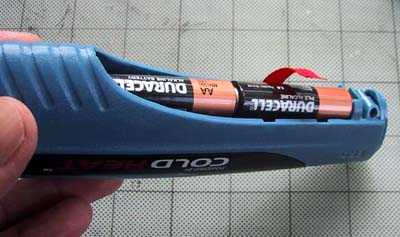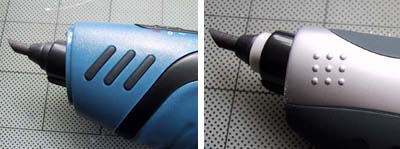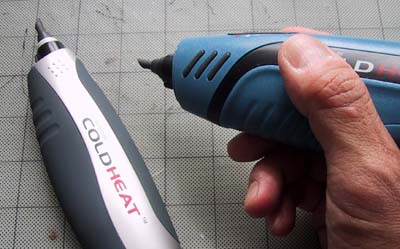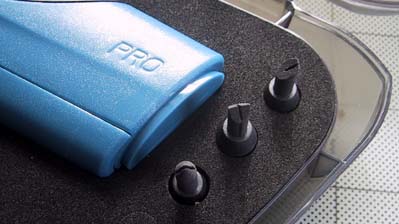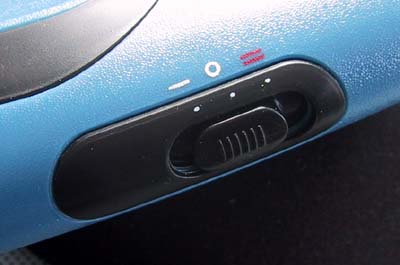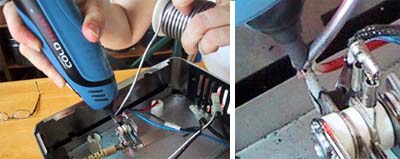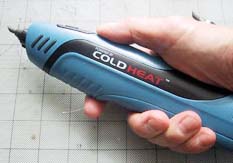
| Today |
| Carolyn's World |
| Gear & Gadgets |
| Garage |
| Garden |
| Kitchen |
| Unaccompanied Minors |
| Workshops |
| Contact Us |
| Index |
Gear & Gadgets...
|
||
ColdHeat revolutionized the heating tool world a few years back with the cordless, split tip ColdHeat v1.0. It was (and still is) a great tool for doing light soldering work and quick small repairs. They have now updated the tool with a more rugged version designed for more demanding applications. The new ColdHeat Pro is beefier, gets hotter, and lasts longer than the smaller version. Like its smaller version, it uses the same split tip design and comes in a form-fitting case.
The bigger ColdHeat Pro now uses five AA batteries. The compartment has been redesigned to have a snap-on lid and now can be opened without a screwdriver. The company claims users will be able to solder about 700 joints with a fresh set of batteries.
The Pro version now has rubber grips at the front for better handling. The bigger body was also contoured for a more comfortable fit. The balance of the tool is very good... an important consideration since this new version is now heavier.
The ColdHeat Pro package comes complete with all three tips (bevel, conical, chisel). We have found the conical tip to be especially useful for very precise work. All the tips will work on the original ColdHeat. If you already have that tool, you will now have different tips for that as well.
A traditional soldering iron works by heating up its metal tip, and placing the hot metal tip on the workpiece along with the solder. Heat was transferred by conduction to the solder, melting it onto the joint.
The ColdHeat split tip works on a different principle and is the secret to ColdHeat's efficiency. The tip is made of a material that is very efficient in conducting electricity (low electrical resistance, cools quickly). While it looks like a single piece, it is actually two separate pieces with an insulator in the middle. When BOTH edges of the tip make contact with a workpiece, they complete the circuit and electricity can flow. The flow of electricity through the higher resistance of the workpiece is what generates the heat. Solder placed on the workpiece will melt. Unlike the traditional solding iron, when the tip is lifted from the workpiece, the circuit is open and the tip quickly cools.
There are two power settings (high, low) on the ColdHeat Pro, giving the user greater control.
The original ColdHeat was more for electronic circuit board work. The new, bigger ColdHeat Pro easily handled our larger repair jobs. We had no problems using it to fix this broken toaster oven in the RainyDayKitchen. Sure, it took us 40 minutes to get the toaster over apart to get at the broken connection, but it only took us 2 seconds to solder the broken wire back onto the switch! NOTE: The ColdHeat Pro, while bigger and generating more heat, is not recommended for use in continuous heating applications. For projects like stained glass work, it is still better to use the traditional corded soldering irons. |
ColdHeat Pro |
|
We have a few things hot enough to melt lead around the RainyDayMagazine office. However, few can do it as efficiently as the new Cold Heat Pro cordless soldering iron.
We have had a lot of experience using both traditional soldering irons and the ColdHeat. The ColdHeat is by far a much better tool for joint soldering and repair work. If you don't have one in your tool box, start dropping some hints for this up coming holiday season now. How? Just forward this review :-) Reviews: 1. FirstLook 2. FirstUse 3. InTheWild
Review Summary: Initial Impression- Bigger Usability- More power Durability- Test in progress Price- $30
Related Reviews:
|
||
